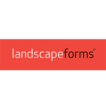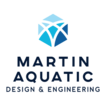LAF is proud to invest in the people and ideas that will drive the future of the landscape architecture discipline.
Each year, LAF selects a six-member cohort of Fellows and recent LAF Olmsted Scholars for the LAF Fellowship for Innovation and Leadership, a year-long transformation program to develop ideas that have the potential to create positive and profound change in the profession, environment, and humanity.
2024-2025 LAF Fellows
The eighth fellowship cohort ran from June 2024 to June 2025. See the final presentations from each of the six Fellows at the 2025 LAF Innovation + Leadership Symposium here.

David Buckley Borden Fuller Design Fellow, University of Oregon, Eugene, OR David
Buckley BordenFuller Design Fellow
University of Oregon
Eugene, OREmergent Mutualism: Closing the Science-Communication Gap through Collaboration between Ecology and Design
This project will identify, develop, and articulate creative environmental-communication methods, models, and frameworks to answer the question, “How can interdisciplinary science-communication be re-imagined as a collaborative design process between landscape architects and ecologists?” The landscape architect’s role as an environmental communicator and educator is certainly nothing new. However, how the profession engages the scientific research community and then collaboratively educates the general public is worthy of inquiry, critical review, and the dissemination of evidence-based practice case studies. David’s fellowship project builds off his ongoing interdisciplinary collaborations with scientists at long-term ecological research sites, including the Harvard Forest in central Massachusetts and the HJ Andrews Experimental Forest in Oregon’s Western Cascades.
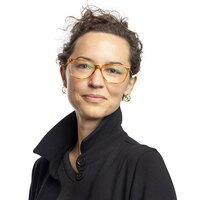
Anya Domlesky Director of Research, SWA Group, Chicago, IL Anya
DomleskyDirector of Research
SWA Group
Chicago, ILInfrastructure, Rescripted: The Public Realm on a Mass Scale
Transportation space today dominates the public realm in the United States. Dallas, Texas’ urban land is typical; in aggregate, roadways fill 20% of the county’s land area. Park space—at half of that—fills 10%. Currently, we allot more than twice the area to transportation as we do to our commons. But we are also living in a moment of transition for transportation. Much of the land area currently occupied by port, river, rail, and road infrastructure will be obsolescing tomorrow. And since much of transportation space is publicly held, it can be adapted for uses with broader benefits, more reflective of public values. The profession has produced sterling individual infrastructure adaptation projects, but it needs to attend to the larger concept and the larger urban network to increase impact.
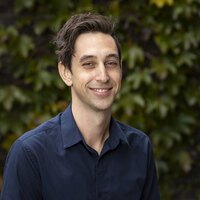
Aaron Hernandez Associate, Reed Hilderbrand, Cambridge, MA Aaron
HernandezAssociate
Reed Hilderbrand
Cambridge, MAToronto Policy Atlas: A Generalist’s Guide to Public Policy (For People Who Care About Landscapes and Environments)
Public policies affect every aspect of modern life. And yet, for many, the relationship between public policy and our daily lives remains opaque. Addressing today’s critical issues—ecosystem restoration, climate change adaptation, and in settler colonial states particularly, reconciliation with Indigenous peoples—will require transformative policy change and a citizenry that understands how policies influence shared landscapes and environments. Using Toronto as a case study, this project will visualize relationships between policy and landscape from the headwaters of the city’s rivers to the shores of Lake Ontario. By illuminating this "invisible infrastructure" of the physical environment, the Toronto Policy Atlas aims to support the political and institutional dimensions of landscape literacy—and asks readers to consider their agency as citizens.
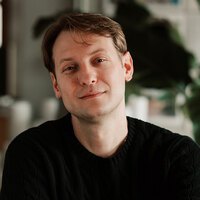
Brad Howe Design Director, SCAPE, New York City, NY Brad
HoweDesign Director
SCAPE
New York City, NYLandscapes are Learning Labs
Landscapes are Learning Labs will explore how landscape architects can advocate for and develop STEM curriculums as a part of each project. Promoting active participation and experiential learning, the work will create a Curriculum Playbook that provides resources to support making the physical landscape architecture project integral to K-12 education. It will also provide roadmaps to implement curriculums and establish a line of partnership between the landscape architect and educator—setting up a template for collaboration in curriculum development. Educating students through landscape participation will empower youth to emerge as future stewards and environmental advocates and forge educational partnerships to drive long-term social resilience in the communities where we design, work, and build.
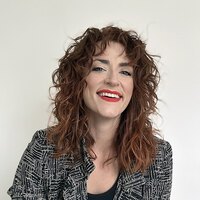
Forbes Lipschitz Associate Professor, The Ohio State University, Columbus, OH Forbes
LipschitzAssociate Professor
The Ohio State University
Columbus, OHFeral Farms: Midwestern Recipes for Rewilding Agriculture
In response to the urgent need for sustainable, biodiverse, and community-centric food sources, the Feral Farms project will examine this central question: How can we effectively modify our diets and de-domesticate our landscapes while preserving cultural diversity and mitigating climate change? Feral Farms will document the experiences of food system rebels, including Indigenous farmers, regenerative farmers, Black farmers, foragers, and hunters of wild game. Through a rich tapestry of regional case studies, this project demonstrates that rewilding agriculture is not just a theoretical aspiration but a potential reality. This research will culminate in a cartographic cookbook, providing recipes inspired by the culinary traditions of the Midwest while speculating on alternative agricultural futures for the region.
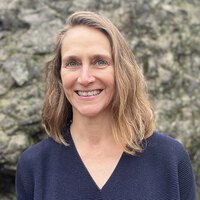
Amy Whitesides Design Critic , Harvard University Graduate School of Design, Cambridge, MA Amy
WhitesidesDesign Critic
Harvard University Graduate School of Design
Cambridge, MAToward a National Agro-forest
Agro-forestry is the practice of agriculture alongside and among forests, forest margins, and tree-crop species. It has the potential to support forest expansion and protection while advancing food security and economic stability locally. In the United States, agroforestry research and implementation are largely guided by individual landowners and best practice guidelines. This project investigates the potential to radically scale up current practices and create a nationally recognizable agro-forest. Opportunities for expanded models of collective land stewardship across boundaries from private farmland to publicly held forest lands will be investigated. Negotiating the complexity of regional collaboration is increasingly critical as regions seek to adapt to changing climate risks. Thus, the project aims to advance methods for landscape architects working on large-scale climate adaptation that requires multi-stakeholder participation.
2023-2024 LAF Fellows
The seventh fellowship cohort ran from June 2023 to June 2024. See the final presentations from each of the six Fellows at the 2024 LAF Innovation + Leadership Symposium here.
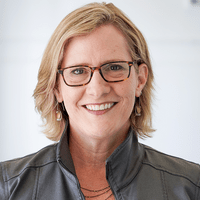
Meg Calkins Professor, North Carolina State University, Raleigh, NC Meg
CalkinsProfessor
North Carolina State University
Raleigh, NCMaterial Shift: Facilitating Radical Change in Site Construction Material Specifications
As approximately 80% of the carbon footprint of a constructed site comes from the materials used to build it, landscape architects must substantially, even radically, change their material specifications to achieve the ASLA Climate Action Plan goal of zero emissions by 2040. Through systemic literature review, case study research, and in-depth interviews, this project examines the work of innovative designers, engineers, and material scientists around the world with low carbon material goals. Beyond facilitating incremental changes to standard construction materials, this project will compile and disseminate performance information on substantially modified material mixes, alternative materials, reclaimed materials, and new products for reduced environmental footprints. A major aim is to provide information to broaden the influence of landscape architects within the decision-making context of site and infrastructure construction.
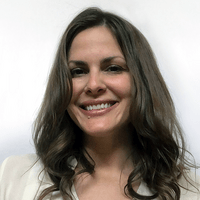
Kathryn Finnigan MLA Candidate, University of Colorado Denver, Denver, CO Kathryn
FinniganMLA Candidate
University of Colorado Denver
Denver, CODesigning Acoustically and Sensorially Supportive Landscapes
We live in a time of increasing neurodivergence awareness, which includes conditions such as autism, ADHD, dyslexia, and dysgraphia, to name only a few, as the list with similar profiles continues to expand. Spatial and health inequities are ongoing issues for this marginalized group. Approximately 15-20% of the global population are estimated to be neurodivergent, and sensory processing challenges commonly impact this population’s experience of public and outdoor spaces. Although some developments for neuro-inclusivity have taken place, the built environment and field of landscape architecture are still catching up. This project builds on previous mixed-methods research and its accompanying Neuro-Inclusive Design Kit, which aims to determine which design interventions in outdoor environments can help cultivate acoustically and sensorially supportive neuro-inclusive spaces through participation with neurodivergent communities. This project will further assess, enhance, and take forward the Neuro-Inclusive Design Kit to nurture equitable and healthful neuro-inclusive landscapes.
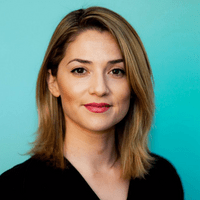
Kimberly Garza Principal, Atlas Lab, Sacramento, CA Kimberly
GarzaPrincipal
Atlas Lab
Sacramento, CAIslands of Heat: Revealing Tree Canopy Inequities and Their Impacts on Disadvantaged Communities
Cities across the nation are experiencing increased temperatures for longer durations, and communities with a lack of tree canopy coverage are enduring extreme health impacts and financial burdens. According to the Tree Equity Report, the poorest communities have 41% less tree cover than the wealthier ones. Further, a 2021 study by Hsu et al. published by Nature Communications found that people of color and those living in poverty experience hotter temperatures in 97% of U.S. cities compared to white people and the wealthy. Whether a large metropolis or a small town, disparities in tree coverage exist, yet little has been done to promote change in policies to increase tree canopy coverage within existing neighborhoods. ‘Islands of Heat’ aims to elucidate inequities in tree canopy coverage within disadvantaged communities through an intimate lens, utilizing visual storytelling as a mechanism to shed light on ecological and social disparities to enact heat resilience.

Johnny Shakir Macon Lecturer, Morgan State University, Baltimore, MD Johnny Shakir
MaconLecturer
Morgan State University
Baltimore, MDIt Started in the Park: Preserving the Cultural Identity of Basketball Courts as Centers of Socialization for Historically Black Urban Communities
This cultural landscape research will document and examine the role that landscape architecture played in shaping spaces that shaped global culture. This project explores how basketball courts, situated in urban parks in major cities, served as place-makers and incubators for the development of Black culture during the 1970s through the 1990s. These courts served as the rising point for the collective identity of teens and young adults that developed the swagger, style, and iconic cultural expressions like music, art, fashion, and language that continue to influence and evolve. Landscape architects have not staked their claim and represented themselves as shapers of these cultural landscapes. This research will entail gathering historical and social documentation of the general cultural impact of basketball and outdoor recreation and will generate educational methodologies to transmit and value this history.

Betsy Peterson Owner, August Design Collaborative, Aberdeen, Scotland, United Kingdom Betsy
PetersonOwner
August Design Collaborative
Aberdeen, Scotland, United KingdomThe Climate Victory Garden: Revisiting the War-Era Victory Garden Movement as a Model for Addressing Biodiversity Loss in the 21st Century City
Inspired by the success “Dig for Victory” campaigns had in providing food to troops during WWI and WWII, this project asks if home gardens and interstitial, urban spaces today can be similarly mobilized to aid in the fight against climate change. Climate change and other impacts of human activities have accelerated the decline of biodiversity, particularly insect species which are the basis of all terrestrial food webs and provide vital ecosystem services, like pollination. As our world has become more urbanized, habitat conservation has frequently been seen as something to be addressed outside of the city, in wildlife refuges and national parks. However, there is opportunity, and urgency, for habitat creation within our cities. The Climate Victory Garden movement has the potential to transform liminal urban spaces into a rich network for biodiversity, stitching habitat into the urban fabric and mitigating negative impacts of urbanization on species loss.
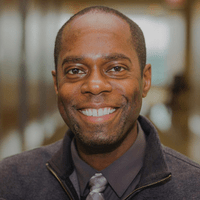
Douglas Williams Lecturer and Film/TV Artist, School of the Art Institute of Chicago, Chicago, IL Douglas
WilliamsLecturer and Film/TV Artist
School of the Art Institute of Chicago
Chicago, ILEngaging K-12 STEAM Public Education Efforts for Future Landscape Architects to Address Climate Equity
Diversity, equity, and inclusion are paramount to securing humans’ ability to have a sustained quality of life in the tumultuous climatic changes affecting the most disadvantaged. Landscape architecture is a critical profession for solving these challenges but seldom is it known and pursued among African Americans as a career path. How can this audience discover this essential field among the areas of K-12 STEAM educational efforts in a major urban city like Chicago? Building on existing programs by Chicago built environment agencies and non-profits and general landscape architecture career discovery resources, this project seeks to co-produce and evaluate activities to reach Chicago Public School students. It will use ethnographic methods (involved-participant observation, emersion interviews and Grounded Theory) to film, document, and analyze programs and events aimed at building interest and relationships for a career in landscape architecture.
2022-2023 LAF Fellows
The sixth fellowship cohort ran from June 2022 to June 2023. See the final presentations from each of the six Fellows at the 2023 LAF Innovation + Leadership Symposium here.
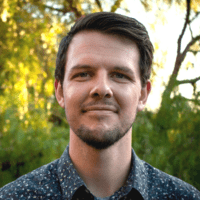
Phillip Fernberg PhD Student, Utah State University, Logan, UT Phillip
FernbergPhD Student
Utah State University
Logan, UTAI-LA: A Knowledge Sharing Platform for Artificial Intelligence in Landscape Architecture
From smartphones to search engines and the conundrum of social media driven public discourse, artificial intelligence (AI) has pervaded the way we work, travel, legislate, recreate, and live in our homes. It has also affected landscape design, with capabilities to carry out project management tasks, perform analysis and optimization, and even autonomously engage in creative acts. However, existing applications and attempts at AI integration remain scattered and singular, with no theoretical framework to understand what AI is more broadly and to what extent it might influence the future of landscape architecture practice, if not redefine practice itself. This project attempts to establish such a framework by creating an open knowledge sharing platform to compile literature, case studies, and applications of AI related to landscape architecture.
AI and the Future of Landscape (Aug 2023 Webinar - Moderated by Phillip)
Phillip's Mid-Year Fellowship Spotlight
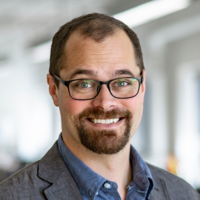
Christopher Roth Hardy Senior Associate, Sasaki, Watertown, MA Christopher Roth
HardySenior Associate
Sasaki
Watertown, MAScaling Up Our Carbon Conscience
Landscape architecture is unique among the design professions in the ability to design economically viable carbon sinks through carbon sequestration by living systems. This project builds upon previous research, particularly the Pathfinder tool and Carbon Conscience App, to further vet and refine these tools to enable the design industry to make better decisions regarding carbon. An extended literature review and peer and stakeholder engagement will produce datasets that address known gaps and weaknesses with the aim of enabling continuity and/or integration across platforms and scales. To help solve the climate crisis, we need to have verifiable information that can be viewed in unison with architectural interventions, to show how landscapes, architecture, and planning can work together towards a sustainable future.
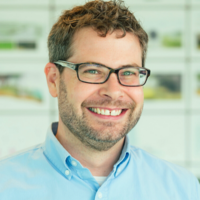
Joseph James, RLA, ASLA Principal, Joseph James Landscape Architecture, Bristol, RI Joseph
James, RLA, ASLAPrincipal
Joseph James Landscape Architecture
Bristol, RIA New Literary Landscape: Graphic Novels to Inspire Landscape Architecture’s Next Generation
Landscape architecture is nearly absent in popular culture, and the field struggles to attract a diverse population of students and practitioners. Promoting landscape architecture as a career option and fostering diversity in the profession have been objectives of the field's capacity organizations, yet strategies seem to focus on didactic materials aimed to further educate those already interested. This project aims to expose and attract a young and diverse audience through the visual format of the graphic novel. It will weave an introduction to the profession through a universally appealing story, using landscape architects as relatable protagonists. Content and messaging will be developed in conjunction with existing awareness programs in order to amplify the message, extend reach, and expanding the impact of current efforts.
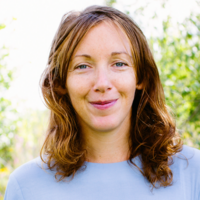
Erin Kelly Director of Special Projects, Rumspringa, Detroit, MI Erin
KellyDirector of Special Projects
Rumspringa
Detroit, MIHow can Landscape Architecture Leverage the Impact of Climate Adaptation Finance by Collaborating to Structure Opportunities Nationally for Vacant Land?
Nationally, thousands of acres of publicly-owned, vacant land are managed on a shoestring budget by 200 land banks. This project explores how landscape architecture might join forces with climate adaptation finance and mobilize enhanced land stewardship in weak market real estate communities where property supply outpaces demand. The vision is to develop a national atlas that makes this opportunity visible. The impact of this work will be to create a platform to structure and direct climate finance investment; to launch a forum to spur new, interdisciplinary landscape research and professional collaborations; and to support advocacy and collective impact at the national level.
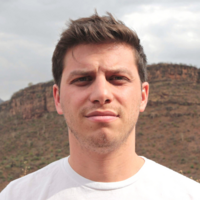
Robert Morrow Levinthal PhD Student, City and Regional Planning, University of Pennsylvania, Philadelphia, PA Robert Morrow
LevinthalPhD Student, City and Regional Planning
University of Pennsylvania
Philadelphia, PAMega-Eco Projects: Developing an Academic Study and Professional Practice of Large-scale Nature based Solutions
Nature-based Solutions (NbS) are an important tool in mitigating and adapting to climate change. Discourse on NbS cites the need to rapidly upscale these projects, often ignoring the past, present, and emerging large-scale projects that fit within this definition. These Mega-eco projects cannot afford to follow the same trajectory of megaprojects which have a well-documented history of being over budget, over time, unsustainable, and underperform. This project seeks to build a community of landscape architects to work and aid in these project's development and implementation.
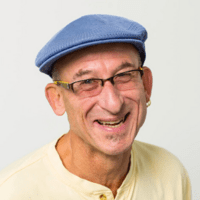
Daniel Winterbottom, RSLA, FASLA Professor, University of Washington, Seattle, WA Daniel
Winterbottom, RSLA, FASLAProfessor
University of Washington
Seattle, WAWhat role does, and can, landscape architecture play to reduce the effects of incarceration and containment?
Human-nature interactions offer many established psychological and physical benefits. As intentionally designed places of healing, therapeutic gardens restore users, lower rumination, increase focus, lower stress, and reduce depression. Those most bereft of nature interactions, such as those in correctional facilities, mental hospitals and detention camps, may benefit most. Through archival research, expert and user interviews, surveys, case studies, and observations gleaned from site visits, this project explores: What role does, and can, landscape architecture play to reduce the effects of incarceration and containment? How can landscapes of incarceration and mental health be made more ecological and therapeutic? What are successful models that reduce the traumatic effects of incarceration and hospitalization using nature-based interventions?
2021-2022 LAF Fellows
The fifth fellowship cohort ran from June 2021 to June 2022. See the final presentations from each of the six Fellows at the 2022 LAF Innovation + Leadership Symposium here.
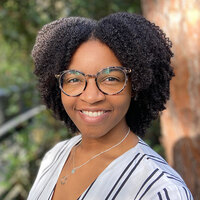
Olivia Bussey Landscape Designer, Curtis + Rogers Design Studio, Miami, FL Olivia
Bussey2019 Olmsted Scholar
Landscape Designer
Curtis + Rogers Design Studio
Miami, FLCyclical Arrest: Breaking the Cycle of Recidivism
The US prison system is a revolving door of criminal action and reaction. This project explores how landscape architecture can play a role in breaking the cycle of recidivism, using design to create supportive, post-incarceration networks that reduce the tendency towards reoffending. The overarching strategies look at repurposing vacant structures and land to include revitalization proposals that feed into cities’ climate action plans and the triple-bottom line of sustainability. The proposal aims to determine guidelines that will empower designers to establish connections between recently-released (or, rather, newly-integrated) citizens and available services, foster a sense of place, and build bonds with the surrounding community.
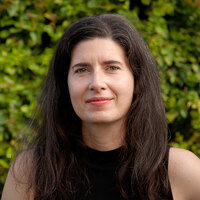
Linda Chamorro Assistant Professor, Florida International University, Miami, FL Linda
ChamorroAssistant Professor
Florida International University
Miami, FLLLAMA: A Call to Connect Latinx Designers and Collaborators to Amplify Their Voices Across the Americas
Landscape as defined by the discipline of landscape architecture is rooted in a European understanding of human relationship, design, planning, and land stewardship. However, across the Americas, an understanding and relationship with tierra (earth) is ancient, multifaceted, and rooted in a different set of values. LLAMA is a grassroots colectivo that challenges problematic hierarchies in our practice and seeks to establish horizontal leadership in the discipline. It aims to connect Latinx designers, students, educators, and collaborators across North, South, and Central America, the Caribbean, and beyond to uplift and address shared gaps in histories, heritage, and landscapes.
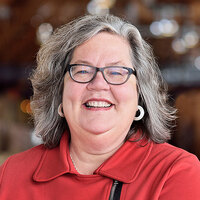
Deb Guenther, FASLA Partner, Mithun, Seattle, WA Deb
Guenther, FASLAPartner
Mithun
Seattle, WAReturn to Community: Building Practice and Advocacy for Community Wealth Building
As the wealth gap expands, alternative systems of closed-loop community wealth building are emerging. These strategies center community-based organizations and can include building long-term relationships between designers and communities. Through a rigorous process of inquiry, this project seeks to develop recommendations that can grow and direct advocacy for the catalysts supporting closed-loop community wealth building as an anti-displacement strategy; increase landscape architecture’s relationship with the social justice community; make plain the relevance of practice for new generations seeking meaningful work; and reshape our collective expectations of the reciprocal value between lived experience and design-thinking.

James A. LaGro Jr., PhD Professor, University of Wisconsin-Madison, Madison, WI James A.
LaGro Jr., PhDProfessor
University of Wisconsin-Madison
Madison, WIAdvancing the Science of Landscape Architecture
Expectations in higher education for research and scholarship have steadily increased as university administrators face growing pressures to augment revenue streams, boost rankings, and expand their institution’s impacts on pressing societal challenges. This project surveys the small but growing number of landscape architects in North America who have earned doctoral degrees. Findings are anticipated to inform revisions to research methods requirements for MLA program accreditation, spur professional development programs to increase the research capacities of faculties, and expand opportunities for doctoral education and mentoring in landscape architecture.
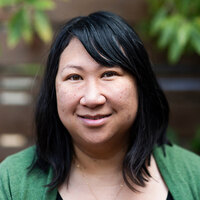
N. Claire Napawan Associate Professor, University of California, Davis, Davis, CA N. Claire
NapawanAssociate Professor
University of California, Davis
Davis, CADiversity by Design: Addressing Diversity and Inclusion in Landscape Architecture Curriculum and Pedagogy
To help ensure the landscape architecture profession remains relevant to the diverse public it serves, this project seeks to address the need for greater diversity within the profession through an examination of current introductory landscape architecture theory and design. Goals include an assessment of representations of diverse and inclusive narratives and an acknowledgment of the profession’s role in addressing racial and social equity. The resources developed from this research would inform new texts, influence future accreditation standards, better reflect the US’ cultural diversity, and increase the accessibility of the profession to under-represented racial and ethnic minorities.
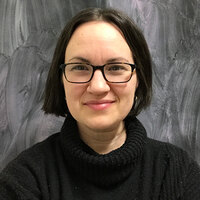
Ellen Oettinger White PhD Candidate, Rutgers, The State University of New Jersey, New Brunswick, NJ Ellen Oettinger
White2016 National Olmsted Scholar Finalist
PhD Candidate
Rutgers, The State University of New Jersey
New Brunswick, NJRoadsides, the Public Good, and the Nature of Power in Landscape Architecture
This project examines the nature of power in landscape architecture — where it is derived, how it is used, and how it can perpetuate or challenge systemic inequalities. Research will focus on landscape architects within state highway agencies where, historically, landscape architects have exercised significant power in this setting. Today, however, that power has dwindled and varies from state to state, posing far-reaching social, environmental, and cultural effects on the nation’s ubiquitous roadside landscapes. Given the ongoing reckoning within the discipline and the centering of discourse from Black and Brown communities, developing a framework for the theory of power within landscape architecture can help align the field with ideas from critical race theory, indigenism, and others.
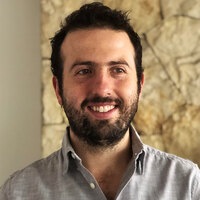
Diego Bermudez Principal and Partner, Bermudez Arquitectos, Bogotá, DC, Colombia Diego
BermudezPrincipal and Partner
Bermudez Arquitectos
Bogotá, DC, ColombiaRedrawing Infrastructure
Indigenous settlers built amphibious agricultural societies around 1300BC on the Bogota River’s middle basin floodplain known today as the Sabana de Bogotá which is today a monofunctional flood control network of canals and remnant wetlands, erasing histories of agriculture, tradition, and local ecology. This project understands the importance of the flood control infrastructure and seeks to reimagine it. The research will compile historical documentation, redraw the evolution of the system, and show the existing conditions in the form of an interactive atlas and exhibition along with a set of design proposals for parts of the system, based upon the need to reconcile uncontrolled urban growth and biodiversity preserving the structures and adjacent districts, elements of local cultural, social, economic, and political history.
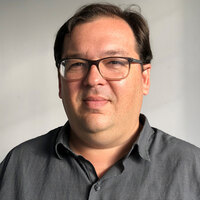
Edmundo Colón Izquierdo Principal, ECo, San Juan, PR Edmundo
Colón IzquierdoPrincipal
ECo
San Juan, PREl río está vivo… y nadie lo sabe! (The River is Alive… and Nobody Knows!): Re-envisioning Flood Control in the Urban Watershed of the Río Piedras
Two years after the 2017 hurricane season, Puerto Rico is still struggling to rise from the debris. As recovery planning and funds have come to a halt, landscape architects have the unique opportunity to propose ways to re-envision the future of the island and help create a resilient, equitable, prosperous, and climate-ready environment – if they can get a seat at the table. Using the Rio Pedras Watershed as a case study, this project seeks to understand the barriers between communication and action towards a resilient recovery process led by landscape architects.
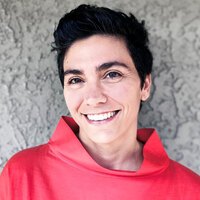
Alison Hirsch Associate Professor and Program Director, University of Southern California, Los Angeles, CA Alison
HirschAssociate Professor and Program Director
University of Southern California
Los Angeles, CAFood Justice and Landscape Ethics in California’s Central Valley
In August 2019, the UN released the report, “Climate Change and Land,” which focused most particularly on the impacts of climate change on our global food supply. This project focuses on a landscape of production that has long fed that global demand – California’s Great Central Valley, specifically its southern portion, the lower San Joaquin Valley. The SJV is a nexus of some of the most pressing environmental questions of our day, particularly as they pertain to global food production. This project seeks to catalyze environmental change in the Central Valley, assert landscape architecture’s leadership role in addressing these questions, and generate replicable strategies for challenging current economic and environmental paradigms.
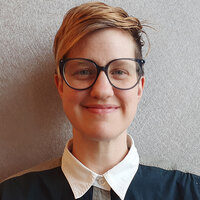
Andrea Johnson Research Director, Terreform Center for Advanced Urban Research, New York, NY Andrea
Johnson2015 National Olmsted Scholar Finalist (Graduate)
Research Director
Terreform Center for Advanced Urban Research
New York, NYPower to the People: Designing for Social Agency of Energy Networks
While popular media tends to portray political obstacles and technological feasibility as the only major roadblocks to renewable energy transitions, integrating variable sources beyond the site scale precipitates a cascade of design and planning questions. As we shift from large-scale engineered infrastructure to decentralized networks, this project will investigate the ways in which the landscape architecture discipline can reinforce community movements that are interacting with physical infrastructure in new and creative ways. It will use community solar projects in New York City as a lens for analysis.
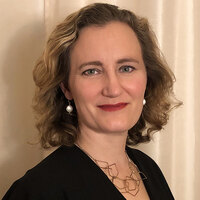
Roxi Thoren Associate Professor and Department Head, University of Oregon, Eugene, OR Roxi
ThorenAssociate Professor and Department Head
University of Oregon
Eugene, ORIncluding Animals
Like wicked problems, the notion of including animals in our design thinking is both critical and profoundly problematic. How we approach the agency and presence of our more-than-human companions on this Earth is critical to sustainable, resilient, and just cities and landscapes. Through two events, this project will examine the role that animals play in shaping current and future landscapes at multiple scales, from puddles to forests, and will seek a path for designing with animals rather than for animals. The outcomes of these events will be compiled into an edited volume of essays, interviews, and projects to expand the reach of the events and disseminate the results to a wide audience of professionals and academics in landscape architecture and affiliated fields.
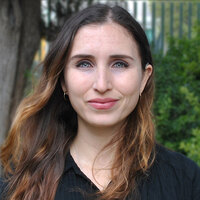
Alexa Vaughn Landscape Designer, OLIN, Los Angeles, CA Alexa
Vaughn2018 LAF Olmsted Scholar
Landscape Designer
OLIN
Los Angeles, CADesign with Disabled People Now: A Toolkit for Landscape Architects and Planners to Create Accessible & Inclusive Landscapes
It’s critical to design for diversity, particularly for disabled people who are often overlooked in the design process. Landscape architects, designers, and planners are tasked with designing public spaces for all. Designers must always ask who we design for, who is doing the designing, and how we understand their needs. Thus, it is critical that a disabled person completes this work. A Deaf woman, Alexa aims to create a toolkit for landscape designers and planners to follow, made by and for disabled people, to come to a better understanding of the disabled community’s needs in the built environment. This Universal Design graphic toolkit will specifically consider the larger scale of urban landscapes, filling a void unaddressed by current Universal Design books or landscape architecture-specific resources.
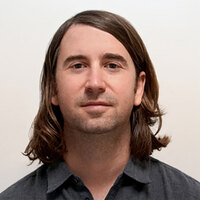
Hans Baumann Independent Landscape Architect, Santa Monica, CA Hans
BaumannIndependent Landscape Architect
Santa Monica, CAPosition Vector Salton Sea
Hans will pursue a site-specific landscape intervention in partnership with the Torres Martinez Desert Cahuilla Indian Tribe. Engaging with Tribal lands, knowledge, and creative resources, the project will culminate in the construction of a monumental artwork in the landscape that measures the disappearance of California’s Salton Sea, the homeland of the Cahuilla since time immemorial. Using landscape as a medium of communication between Western design methodology and Indigenous knowledge, this project will leverage the uniquely interdisciplinary tools of landscape architecture to draw attention to an emergent environmental catastrophe.

Pierre Bélanger Landscape Architect, Urban Planner, & Settler Scholar, OPEN SYSTEMS / Landscape Architecture Lab, Boston *, MA Pierre
BélangerLandscape Architect, Urban Planner, & Settler Scholar
OPEN SYSTEMS / Landscape Architecture Lab
Boston *, MALANDSCAPE AS REVOLUTION: A Contemporary, Historiographic Inquiry into the Subtexts, Pretexts, & Contexts of Landscape Architecture Since 1993
Emerging from an overlooked body of work in the past twenty-five years, the project aims to create a book publication that brings together a range of landscape practitioners, including botanists, arborists, historians, hydrologists, anthropologists, and activists. Through a series of original translations, archival texts, and overlooked writings by landscape activists, the main vision of the project involves the revival of the geopolitical study of land as a contemporary, transcultural subject for greater publics.
*Traditional lands of the Massachusetts people, unceded and unsurrendered territory of the Wampanoag and Nipmuc Nations
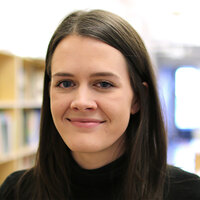
Elizabeth Camuti Landscape Designer, SCAPE, New Orleans, LA Elizabeth
Camuti2018 National Olmsted Scholar (Graduate)
Landscape Designer
SCAPE
New Orleans, LAResiliency Planning at the Territorial Scale of the United States’ Caribbean Islands
Climate change is already affecting the planet, yet the public is often limited in their ability to provide input on plans to address the problems it causes because of engagement models have not kept pace with a rapidly changing world. This project will seek to bridge that gap by employing multimedia installations that merge cultural literacy and community engagement. These interventions will allow audiences to engage in play and problem-solving to gain a greater understanding of landscape solutions and provide meaningful feedback.
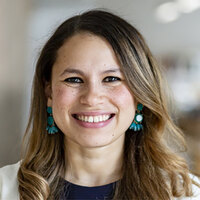
Diana Fernandez Associate, Sasaki, Watertown, MA Diana
FernandezAssociate
Sasaki
Watertown, MAHeterogeneous Futures: A Framework for Ecologically & Culturally Diverse Landscapes
Historically, the profession of landscape architecture has innovated practice models through distinct periods, such as the national replications, modernism, and landscape ecology movements. Today, the natural progression for our profession is to enable social, cultural, and linguistic knowledge to be an integral part of the design process. This project seeks to gather these realms of knowledge through case studies and a book manuscript to promote truly resilient landscapes that reflect the collective experiences of the people who will inhabit the spaces.
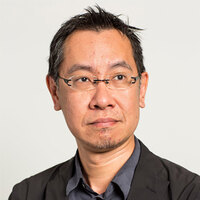
Jeffrey Hou Professor, Department of Landscape Architecture, University of Washington, Seattle, WA Jeffrey
HouProfessor
Department of Landscape Architecture, University of Washington
Seattle, WAEducating Design Activists in Landscape Architecture
Design activists employ a range of techniques to advocate for social and ecological justice, but, for many, landscape architecture is an unknown. This project will assemble a group of leading educators and practitioners to produce a white paper and resource guide on educating design activists and leaders in landscape architecture. The results will be shared with educators and educational institutions around the world and disseminated through lectures and presentations at major conferences.
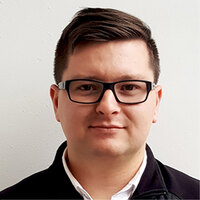
Nicholas Jabs Designer, PORT Urbanism, Philadelphia, PA Nicholas
Jabs2018 National Olmsted Scholar Finalist (Graduate)
Designer
PORT Urbanism
Philadelphia, PAWorking Landscapes and the Middle American City
Nicholas will build on his thesis work to explore the environmental and economic performance of working landscapes in the cities of Middle America. Guided by past research, the project will question the future of work in a region defined by manufacturing industries, propose a new approach to manufacturing as a design problem to be known as ‘working landscapes,’ and develop a network of designers and non-designers who can unite their efforts to create alternative futures for the working landscapes of Middle America. The knowledge generated will be shared widely with the goal of leveraging change, especially in the political and economic arenas.
2018-2019 LAF Fellows
The second year of the LAF Fellowship for Innovation and Leadership ran from May 2018 until June 2019. See the final presentations from each member of the cohort here.
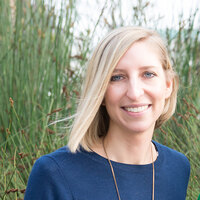
Pamela Conrad Principal, CMG Landscape Architecture, San Francisco, CA Pamela
ConradPrincipal
CMG Landscape Architecture
San Francisco, CAClimate Postive Design: Going Beyond Neutral
To improve the impact of our projects on the planet, we need to better understand their landscape carbon footprints. To date, no publicly available carbon calculator for landscape architecture exists. As landscape projects contain trees and plants, they possess the power to sequester carbon. That said, can landscape architects do better than carbon neutral? Can we instead strive beyond neutrality to do “net good” and contribute to the fight against global warming? To do this, we must understand how to measure our contributions. With a carbon calculator specifically designed for landscape architecture, we can actively set goals for ourselves as a profession to combat climate change.

Daví de la Cruz Project Manager, Los Angeles Neighborhood Land Trust, Los Angeles, CA Daví
de la Cruz2017 National Olmsted Scholar (Graduate)
Project Manager
Los Angeles Neighborhood Land Trust
Los Angeles, CACommunity-based Storytelling: Los Angeles' Neighborhood Design
Through film, Daví will archive the built environment of Los Angeles by exploring the land uses that affect communities and point to the potential of landscape architecture paired with on-site phytoremediation as a way to address sites that are polluted. This project is intended for high-school classrooms to explore topics of both environmental and social sciences while simultaneously grounding the built environment experiences of high-school-aged youth from working class families. In partnership with extensive advocacy work, this film will also point to landscape architecture as a profession fit to address environmental justice issues.
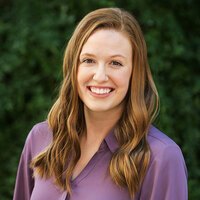
Lauren Delbridge Landscape Designer, Land Design, Charlotte, NC Lauren
Delbridge2017 National Olmsted Scholar (Undergraduate)
Landscape Designer
Land Design
Charlotte, NCRethinking Wastescapes
Lauren will continue her thesis explorations at Virginia Tech to explore the future of coal ash ponds and research successfully remediated wastescapes in the U.S. and abroad. Lauren plans to collect precedent case studies through the documentation of site visits, discussions with stakeholders, and the collection and study of existing remediation strategies. Lauren looks forward to the support of the fellowship cohort to help her develop and refine a strategy for further research on disturbed sites. Participation in the fellowship will be valuable in guiding her research and building her leadership skills to allow her to propel her advocacy work from academia into the public realm.
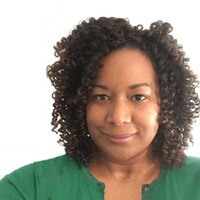
Maisie Hughes Owner, Design Virtue, Washington, DC Maisie
HughesOwner
Design Virtue
Washington, DCBelonging: Identity and Landscape Narrative
Maisie will produce a documentary series that seeks to uncover feelings of belonging or exclusion in the landscape to help elucidate how socio‐economic factors affect landscape interpretation. This project will examine how different types of people interpret the same landscape by creating short web documentaries that explore the concepts of belonging and trespassing in high‐profile DC landscapes, both public and private. The project will document DC residents from diverse backgrounds in Dumbarton Oaks, Washington National Cathedral grounds, Meridian Hill Park, Kenilworth Aquatic Gardens and the Gotelli and Asian Collections of the U.S. National Arboretum.
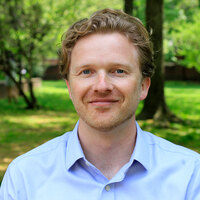
Karl Krause Senior Landscape Architect, OLIN, Philadelphia, PA Karl
KrauseSenior Landscape Architect
OLIN
Philadelphia, PABetween Neighbors
Decades of diminished federal funding and limited capital improvements have left millions of Americans in deteriorating 50s-era housing in a landscape hindered by dated urban design ideas. Recent restructuring of federal support for public housing has generated billions to fund capital improvement projects. Landscape architects have an opportunity to lead developers and public housing officials in solving long-standing problems of social isolation while creating a new vision for public housing. To support this, The Landscape of Public Housing will combine site visits, interviews, and analysis to illustrate current conditions in a documentary video and create design resources for those engaged in the rehabilitation of public housing communities.
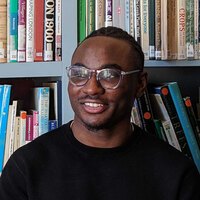
Andrew Sargeant Landscape Designer/Visualization Specialist, Lionheart Places, Austin, TX Andrew
Sargeant2016 University Olmsted Scholar (Undergraduate)
Landscape Designer/Visualization Specialist
Lionheart Places
Austin, TXThe Aesthetic of Proof
Andrew seeks to emphasize and clarify the benefits that immersive technologies offer the profession of landscape architecture. Immersive technologies, specifically augmented reality and virtual reality, provide greater potential than all previous rendered visualizations of landscape. Although traditional means allow us to prototype, with immersive tech, designers are provided a more direct experience by being able to walk, fly and interact with their prototypes, either in a VR or AR environment. Andrew plans to conduct survey research and use it to garner partnerships with stakeholders to create and make available solutions for landscape architects to use in the design of and advocacy for public space.

Sanjukta Sen Senior Associate, James Corner Field Operations, New York, NY Sanjukta
SenSenior Associate
James Corner Field Operations
New York, NYVolume for Water: Rethinking Frameworks for Urban Coastal Resilience
As coastal cities grapple with sea level rise and more frequent occurrences of flooding, it is necessary to codify standards for open space in waterfront developments, with zoning laws and codes that focus not only on area but also on volume provided for water. Public-private partnerships will continue to be responsible for urban development projects that will shape our cities and coastlines in the years to come. It is incumbent on our profession to question and critique existing legislative frameworks that govern these developments and to propose replicable and incremental mechanisms that allow public open space to perform a role beyond its traditional social and ameliorative characterizations.
2017-2018 LAF Fellows
The inaugural year of the LAF Fellowship for Innovation and Leadership ran from May 2017 until May 2018. See the final presentations from each member of the cohort here.
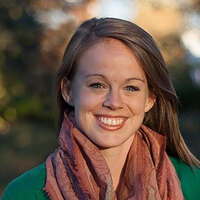
Harriett Jameson Brooks Landscape Designer, Hawkins Partners, Alexandria, VA Harriett
Jameson Brooks2014 National Olmsted Scholar Finalist (Graduate)
Landscape Designer
Hawkins Partners
Alexandria, VAShifting Perceptions: Reconceiving Public Space in the American South
A Native Tennessean, Harriett (2014 Olmsted Scholar Finalist) explores the opportunities of public space in the South to catalyze social resiliency and reconciliation. She is interested in the power of place to shape our personal narratives and its ability to expand and reshape those narratives through sites of conscience.
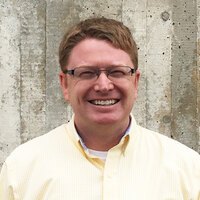
Scott Douglas Director, Hahn Horticulture Garden, Blacksburg, VA Scott
Douglas2016 University Olmsted Scholar (Graduate)
Director
Hahn Horticulture Garden
Blacksburg, VAThe (Large) Space Between: Reimagining Highway Corridors as Performative Landscapes
Scott (2016 University Olmsted Scholar) investigates alternative uses for the maintenance-intensive highway corridors. His work includes a review The Ray, an 18-mile section of Interstate 85 in southwest Georgia that serves as a testing ground for new ideas and technologies to transform transportation infrastructure.
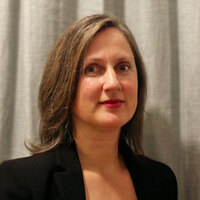
Claire Latané Senior Associate, Mia Lehrer + Associates, Los Angeles, CA Claire
LatanéSenior Associate
Mia Lehrer + Associates
Los Angeles, CAFor the Love of Teenagers: Advocating for Safe, Restorative High School Environments
Claire is leveraging her journalism and landscape architecture experience to advocate for high school environments that support student mental health and well-being. Using Los Angeles as a case study, she is working with students, educators and administrators, designers, non-profits, city agencies, and community members to develop policy and design recommendations that reflect a sense of love and safety rather than security and fear.

Brice Maryman Director of Landscape Architecture, MIG l SvR, Seattle, WA Brice
MarymanDirector of Landscape Architecture
MIG l SvR
Seattle, WAMaking Space: Optimistic Strategies for Urban Homelessness
What is the role of public space in confronting the growing challenge of homelessness? Through the HomeLandLab project, Brice Maryman explores the ways that the connective tissue of our cities—our public spaces—can be shaped, programmed and managed to improve the lives of those experiencing homelessness.
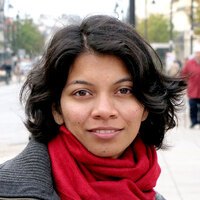
Alpa Nawre Assistant Professor, University of Florida, Gainesville, FL Alpa
NawreAssistant Professor
University of Florida
Gainesville, FLCritical Places: Design Interventions to Address Water and Other Issues in Rural India
Alpa’s work in India aims to prototype a process to address critical issues such as water scarcity and waste management through design strategies and small-scale, physical interventions to create a stronger, more cohesive and forward-looking community.
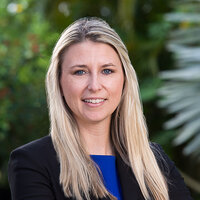
Nicole Plunkett Landscape Architect, Cotleur & Hearing, Jupiter, FL Nicole
PlunkettLandscape Architect
Cotleur & Hearing
Jupiter, FLCultivating Future Landscape Architects: Career Discovery in K-12 Education
Who will shape the future of landscape architecture? Nicole explored how the continued development of her nonprofit, Future Landscape Architects of America (FLAA), can help to grow and diversify the profession in the coming years.

